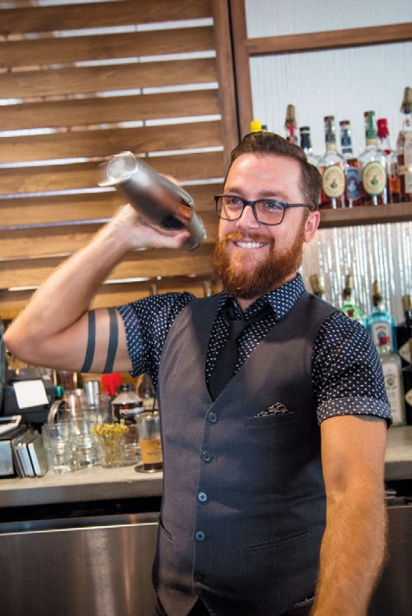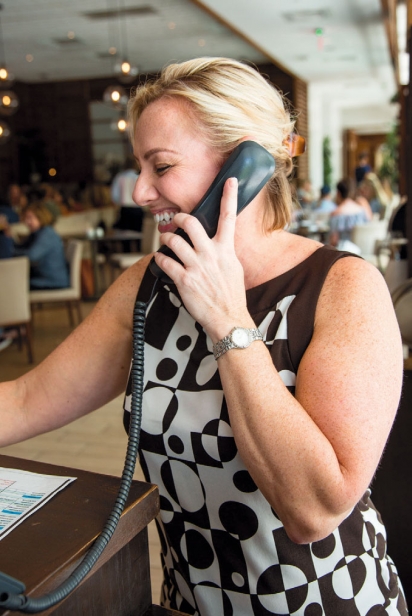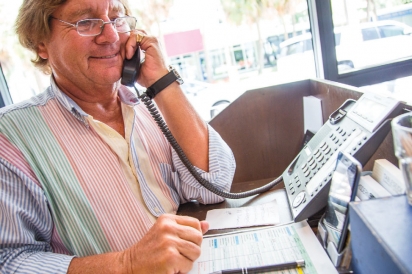Has Anyone Seen My Waiter? Staffing on the Suncoast
For the past two years or so, news outlets from California to Washington, DC, have steadily churned out headlines lamenting a crisis within the restaurant industry. It doesn’t matter if you’re running a taco shack or a temple to haute cuisine, desperate restaurant owners across the country are wondering, “Where have all the workers gone?”
The pains of a national restaurant staffing crisis have not missed Sarasota, a city that’s successfully branding itself as a culinary destination. Digging into the roots of the issue unearths a catch-22 of complicating factors: As Sarasota’s status as a food and fine-dining mecca rises, so does a bevy of new hotels, high-end housing developments, and, of course, new restaurant concepts.
Expectations are rising, too: Restaurant patrons have rightfully come to expect excellence from their dining experiences, putting extra pressure on owners and managers to staff their establishments with highly skilled professionals. However, with the Bureau of Labor Statistics reporting Florida unemployment at a 10-year low (and still trending downward) and a dearth of affordable housing in proximity to all the shiny new development in town, the hiring pool for the local restaurant industry has shrunk to a puddle.
“Growing pains—that’s the best way to describe it for Sarasota right now,” says Rob Boyland, bar manager and lead bartender at JPAN, which opened its second location in the University Town Center in August 2016. “It’s just tough for people in this business to live in an area that’s so affluent. We’re expected to staff these restaurants and bars and serve that demographic, but—are we gonna commute from Arcadia?”'
Tableseide Restaurant Group employs hundreds across its six dining concepts, so CEO Joe Seidensticker knows a thing or two about the current climate.
“The service industry used to be a typical fallback, and you’d find great people who were interim or in between jobs,” Seidensticker says. “The pool of people was large, whereas today that pool just doesn’t seem to be as deep as it used to be.”
He, too, cites a high cost of living as a barrier to people considering a career path in the restaurant world. In a segment of the investigative journalism project “Catching Our Drift,” Herald-Tribune reporter Barbara Peters Smith highlighted significant wage increases as Tableseide’s “obvious defensive move” while the staffing crisis peaked. Nevertheless, Seidensticker reports that the labor shortage situation remains unchanged.
That said, when Sarasota restaurateurs speak of the staffing crisis, their voices lack the notes of panic detectable in the stories accompanying those aforementioned headlines from elsewhere in the country. For one thing, when you operate a restaurant that serves a seasonal population, you become all too familiar with challenges in not just attracting but retaining hospitality professionals. Now that a sea change is afoot across the service industry at large, Sarasota’s local restaurants surf that wave, pioneering a cultural shift.
“Personally, I think it’s always been difficult to find quality and experienced people,” says Chef Eddie Yzeiri of Apollonia Grill. “I think now it’s gotten harder, but you have to adapt, you have to change with the times. I’m positive about it. You have to provide reasons why staff should work for the restaurant.”
The ways in which local restaurants are adding value to employment opportunities are as diverse and creative as the culinary community itself. Yzeiri, for instance, offers staff paid vacations and hands out bonuses at Christmas and Easter.
“They’re small, but they’re extra, and I think staff appreciate them,” he says. “Definitely it’s enough to buy a turkey or a nice meal during those holidays.”
Up at The Waterfront Restaurant on Anna Maria Island, owner Jason Suzor outfits employees with a 401(k), a gym membership, and health insurance coverage, plus a TV screen in the kitchen so the line can catch the game while they cook. Chris Voelker, co-owner of State Street Eating House + Cocktails, recently took her staff on a trip to New York City to research and glean ideas for a menu revamp.
Chef Evan Gastman, who oversees multiple Siesta Key kitchens including Summer House, The Cottage, and The Hub Baja Grill, emphasizes flexible hours, hands-on involvement from ownership and senior management, and professional development for his kitchen staff. One of his favorite practices is asking Summer House employees to recall their favorite dish from childhood. He then collaborates with them to stylize that memory into a special of the day.
“Now,” Gastman says, “all of a sudden, they’re having memories of their mom, memories of being home. Now I’ve just let them make this special that they grew up eating—maybe making it a little more foo-foo, or tweaking some of the plate presentation—but now they’re 100 percent engaged in this dish.
“Now, they’re not just coming to work—they’re excited to come to work.”
Combined with healthy wages, each restaurant’s unique benefits contribute to a workplace culture that’s supportive, engaging, and conducive to employees’ growth. After investing considerable dollars and hours to win and train staff who can uphold Sarasota’s increasingly demanding hospitality standards, more owners and managers are eager to demonstrate respect for workers’ commitment to their industry. Working at a locally owned restaurant is hardly an entry-level game anymore, and Sarasota’s eateries are hungry for the people who want to make service a livelihood.
“The good thing about the restaurant business is it holds through good economies and bad economies,” Seidensticker says. “I just think as a restaurant community we need to work a little better to get the word out about the opportunities there.”












